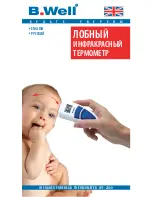
OMEGA Model CYD201/CYD208 User’s Manual
1-4
Introduction
When transferring LHe and LN
2
, protect eyes and skin from accidental
contact with liquid or the cold gas issuing from it. Protect eyes with full face
shield or chemical splash goggles; safety glasses (even with side shields)
are inadequate. Always wear special cryogenic gloves (Tempshield
Cryo-Gloves
®
or equivalent) when handling anything that is, or may have
been, in contact with the liquid or cold gas, or with cold pipes or equipment.
Wear long sleeve shirts and cuffless trousers long enough to prevent liquid
from entering shoes.
1.2.3
Recommended First Aid
Post an appropriate Material Safety Data Sheet (MSDS) obtained from the
manufacturer/distributor at every site that stores and uses LHe and LN
2
. The
MSDS specifies symptoms of overexposure and first aid.
If a person exhibits symptoms of asphyxia such as headache, drowsiness,
dizziness, excitation, excessive salivation, vomiting, or unconsciousness,
remove to fresh air. If breathing is difficult, give oxygen. If breathing stops,
give artificial respiration. Call a physician immediately.
If exposure to cryogenic liquids or cold gases occurs, restore tissue to
normal body temperature (98.6°F) by bathing it in warm water not exceeding
105 °F (40 °C). DO NOT rub the frozen part, either before or after
rewarming. Protect the injured tissue from further damage and infection and
call a physician immediately. Flush exposed eyes thoroughly with warm
water for at least 15 minutes. In case of massive exposure, remove clothing
while showering with warm water. The patient should not drink alcohol or
smoke. Keep warm and rest. Call a physician immediately.
1.3
ELECTROSTATIC DISCHARGE
Electrostatic Discharge (ESD) may damage electronic parts, assemblies,
and equipment. ESD is a transfer of electrostatic charge between bodies at
different electrostatic potentials caused by direct contact or induced by an
electrostatic field. The low-energy source that most commonly destroys
Electrostatic Discharge Sensitive (ESDS) devices is the human body, which
generates and retains static electricity. Simply walking across a carpet in
low humidity may generate up to 35,000 volts of static electricity.
Current technology trends toward greater complexity, increased packaging
density, and thinner dielectrics between active elements, which results in
electronic devices with even more ESD sensitivity. Some electronic parts
are more ESDS than others. ESD levels of only a few hundred volts may
damage electronic components such as semiconductors, thick and thin film
resistors, and piezoelectric crystals during testing, handling, repair, or
assembly. Discharge voltages below 4000 volts cannot be seen, felt, or
heard.
Содержание CYD201
Страница 1: ...M789 038A 15 June 1999...
Страница 6: ...OMEGA Model CYD201 CYD208 User s Manual iv Table of Contents This Page Intentionally Left Blank...
Страница 22: ...OMEGA Model CYD201 CYD208 User s Manual 2 10 Installation This Page Intentionally Left Blank...
Страница 28: ...OMEGA Model CYD201 CYD208 User s Manual 3 6 Operation This Page Intentionally Left Blank...
Страница 36: ...OMEGA Model CYD201 CYD208 User s Manual 4 8 Remote Operation This Page Intentionally Left Blank...
Страница 44: ...OMEGA Model CYD201 CYD208 User s Manual 5 8 Service This Page Intentionally Left Blank...
Страница 48: ...OMEGA Model CYD201 CYD208 User s Manual 6 4 Options and Accessories This Page Intentionally Left Blank...
Страница 57: ...NOTES...
Страница 58: ...NOTES...
Страница 60: ......











































